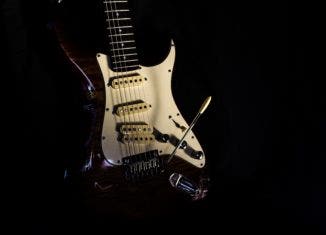Sikh Army Captain Allowed To Wear Beard, Turban
By FOX’s Eben Brown
When one thinks of a line of soldiers, it is easy to picture the uniform.
Not just the clothing – be it dressed up in pressed shirts, ties at the proper length down the torso, shinning patent leather shoes, etc. or the duty uniform’s toughened fabric durable coveralls with Velcro name, rank and flag badges… But uniformity.
Everybody looks alike. Hair is short and neat. The face is clean-shaved.
But what happens if keeping your head covered and keeping your beard is a commandment from God? Such is the case of U.S. Army Captain Simratpal Singh.
“I was born in Punjab, India.”
Singh hails from a Sikh Indian family who escaped persecution. He came with his parents as a young child, settling first in California and then in Washington State. The U.S., says Singh, saved his family.
“My father tried to get political asylum with different countries,” recounts Singh. “The U.S. was the only one that gave us the opportunity.”
And while growing up in a new land, Singh developed an admiration many young American boys come to have: being in the Army.
“I’ve always had a childhood fascination with being a soldier. My grandfather was in World War I for the British Indian Army. And Sikhs have a rich military tradition.”
And so, Singh studied hard. After high school, he learned he was accepted into the United States Military Academy at West Point, NY. He felt his path to serve his adoptive country was cleared for him. Nothing would make him more proud.
“My family was given the opportunity to the come over to the United States. I felt like I needed to do something to repay for the generosity.”
By now, a grown man at age 18, and about to put on the uniform, Singh learned he might have to leave two important things behind: His beard and turban. For Singh, his outward signs of his faith might inhibit him from serving the country he had grown to love. But instead of turning around and chasing a different life path, he chose to fight another day.
“I remember standing in front of the barber shop and telling myself, I’m going to choose to serve my country right now, but I’m going to figure out a way to get back to my roots and closer to my faith’.”
And so, he cast off his turban, shaved his head and his face, and became a soldier. He served his nation. After graduating West Point, Singh took his commission and became a combat engineer. He trained alongside the Army’s elite Rangers, and even deployed with them in 2012 to Afghanistan where he lead a platoon of engineers in the dangerous task of ensuring travel routes were cleared of booby traps and enemy combatants.
After his term overseas, Singh took on advanced training, earning his Captain’s rank and a posting as an Assistant Operations Officer for the 249th Engineer Battalion, based at Virginia’s Fort Belvoir. Singh would like to have a command of his own.
“Hopefully.”
But through his decade in the service, two things were missing for Singh: His beard and turban.
So he began his to research the issue in hopes of finding a way where he could be allowed to stay in the uniform, but with those two exceptions. The effort involved legal filings within the military courts. And after months of hearings and paperwork, Singh got the answer he wanted: He could now grow a beard and wear his religiously-demanded head covering.
To say Singh is happy would be an understatement. He’s thrilled… but not because he won a court battle with the military.
“I am extremely thankful of this opportunity to continue serving.”
The edict doesn’t come without rules, however: Singh must keep his beard groomed and neat, and can’t interfere with his ability to do his job. As for the turban, he gets options: His dress uniform must feature a black turban with the same insignia as on the black beret worn by other soldiers. If he’s wearing his Army Combat Uniform (the modern day “fatigues”), he can wear the black turban or one in the same camouflage print as the ACU’s jacket and trousers.
And while such an exception from the uniform seems like a novel idea, Singh says it isn’t. Through his research, he found that only recently in the nation’s history, were Sikh features forbidden to be worn by U.S. soldiers.
“Sikhs have been serving in the U.S. Armed Forces with their articles of faith really since 1915,” says Singh. “The moratorium was only after the early 1980’s.”
Winning back the right to wear his turban and bears, Singh says, came with the support of everyone: His commanders, his subordinates, and his war comrades from the Special Forces.
“My experience has been overwhelmingly positive,” adds Singh. “I’m thankful to my chain of command.”






